
If this is showing on the site, the Archived items aren't filtering out.
- Subject:
- History
- Material Type:
- Lesson Plan
- Author:
- National Air and Space Museum
- Date Added:
- 06/14/2022

If this is showing on the site, the Archived items aren't filtering out.
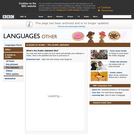
This page contains a list of all the letters in the Arabic alphabet, organized in seven groups. Users can listen to a native speaker read the names of the letters online or download the clips for home use. Users can also print out selected letters. The site also lists information about writing in Arabic, including the short vowel system, joining the Arabic letters together, and the names for symbols commonly used in email addresses.
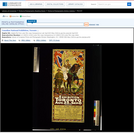
Poster shows a woman, representing Canada, on a horse, holding the British flag; next to her stands a Canadian soldier and overhead is an airplane; in background, the exhibition grounds. Various other war-related items are depicted. Title from item.
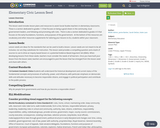
IntroductionThis lesson seed includes lesson plans and resources to assist Social Studies teachers in elementary classrooms. These is a section dedicated to grades 1-3 that focuses on being a good citizen in the community, local governement leaders, and following and promoting safe rules. There is also a section dedicated to grades 4-5 that focuses on the early foundations, functions, and purposes of the governement. At the bottom of the resources is an academic vocabulary word list for key concepts to consider providing visual support to assist you in tailoring your lessons to ELL students within your classroom, along with link to WIDA CAN DO Descriptors.Lesson Seeds:Lesson seeds are ideas for the standards that can be used to build a lesson. Lesson seeds are not meant to be all-inclusive, nor are they substitutes for instruction. This lesson seed provides a compelling question and a bank of sources to use to drive an inquiry based lesson or a potential Evidence Based Argument Set (EBAS). When developing lessons from these seeds, teachers must consider the needs of all learners. Once you have built your lesson from the lesson seed, teachers are encouraged to post the lesson that has emerged from this lesson seed and share with others.
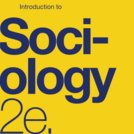
Introduction to Sociology 2e adheres to the scope and sequence of a typical, one-semester introductory sociology course. It offers comprehensive coverage of core concepts, foundational scholars, and emerging theories, which are supported by a wealth of engaging learning materials. The textbook presents detailed section reviews with rich questions, discussions that help students apply their knowledge, and features that draw learners into the discipline in meaningful ways. The second edition retains the book’s conceptual organization, aligning to most courses, and has been significantly updated to reflect the latest research and provide examples most relevant to today’s students. In order to help instructors transition to the revised version, the 2e changes are described within the preface.


Understand how values and beliefs differ from normsExplain the significance of symbols and language to a cultureExplain the Sapir-Whorf hypothesisDiscuss the role of social control within culture

Locating restaurants in an unfamiliar place, reporting potholes to the local DOT, obtaining real-time traffic conditions... All of these are examples of geospatial web apps that are revolutionizing how people obtain and share information about the world. In GEOG 863, you will learn how to build apps like these. You'll start with a quick look at the fundamentals of web programming (HTML and CSS) before diving in to using JavaScript and a mapping application programming interface (API) developed by Esri. Using this API, you'll create both 2D and 3D visualizations of your own data and learn how to develop a user interface to enable users to interact with your map.
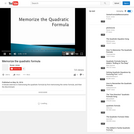
3:18 movie helping viewer to memorize the quadratic formula using symbol imagery and taking away one symbol at a time.

This course introduces scholarly debates about the sociocultural practices through which individuals and societies create, sustain, recall, and erase memories. Emphasis is given to the history of knowledge, construction of memory, the role of authorities in shaping memory, and how societies decide on whose versions of memory are more “truthful” and “real.” Other topics include how memory works in the human brain, memory and trauma, amnesia, memory practices in the sciences, false memory, sites of memory, and the commodification of memory. Students taking the graduate version complete additional assignments.

Madeline Noonan uses "The Sneetches" by Dr. Seuss as a touchstone text creating a shared experience with the class that can be referred back to again and again. In this lesson, the touchstone text teaches students about looking for metaphors and symbols across an entire text rather than just a phrase or sentence.
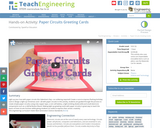
Light up your love with paper circuits this Valentine’s Day—no soldering required! Create a sure-to-impress flashing birthday card or design a light-up Christmas card—all with paper circuits! In this activity, students are guided through the process to create simple paper circuitry using only copper tape, a coin cell battery, a light-emitting diode (LED) and small electronic components such as a LilyPad Button Board. Making light-up greeting cards with paper circuitry is great way to teach the basics of how circuits function while giving students an outlet to express their artistic creativity.
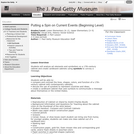
Students will analyze art elements and symbolism on a 17th-century cabinet and create cardboard cabinets using symbols to convey a message.
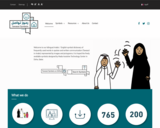
Tawasol symbols represent a symbol dictionary of frequently used words in spoken and written Arabic communication. The symbols are represented by images and pictograms.

Survey and special topics designed for students in Brain and Cognitive Sciences. Emphasizes ethological studies of natural behavior patterns and their analysis in laboratory work, with contributions from field biology (mammology, primatology), sociobiology, and comparative psychology. Stresses human behavior but also includes major contributions from studies of other animals.
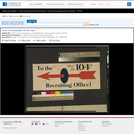
Poster with an arrow pointing the way to the recruiting office.
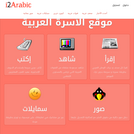
This website allows the user to type in an Arabic phrase using transliteration and the site will give options in Arabic script. The user can then choose which word was intended. Symbols and phrases are included for convenience, as is a download that can connect this website and its technology to the user's own website.